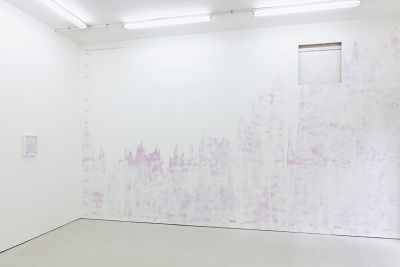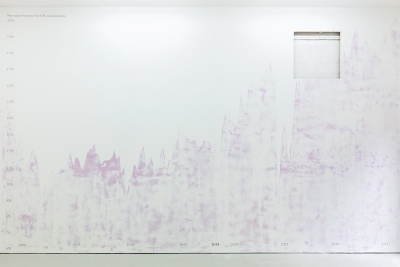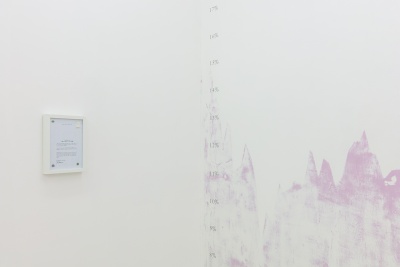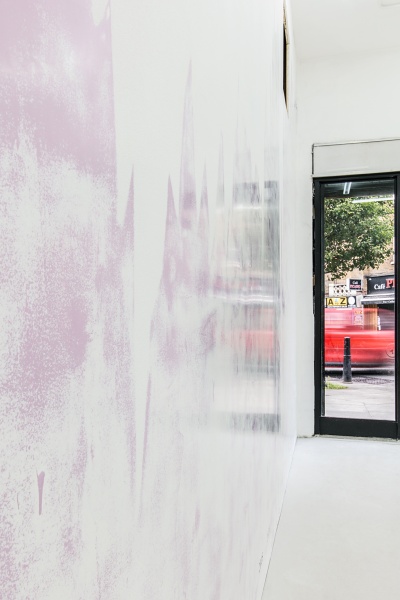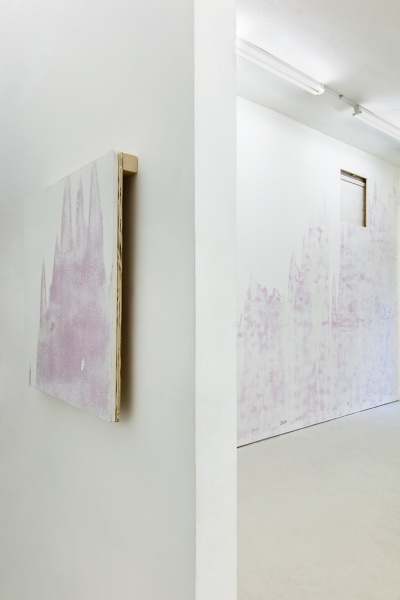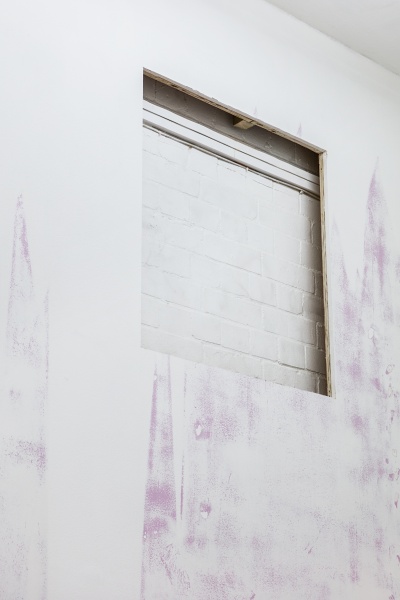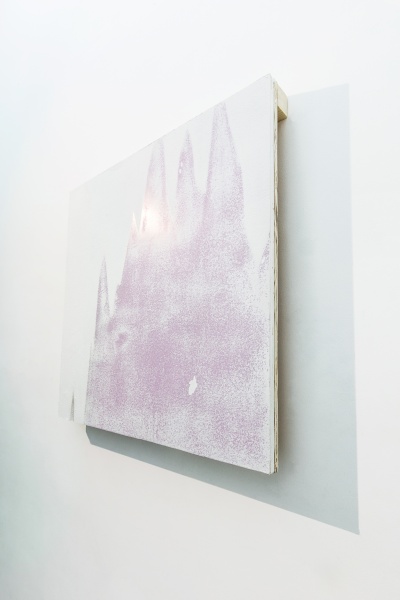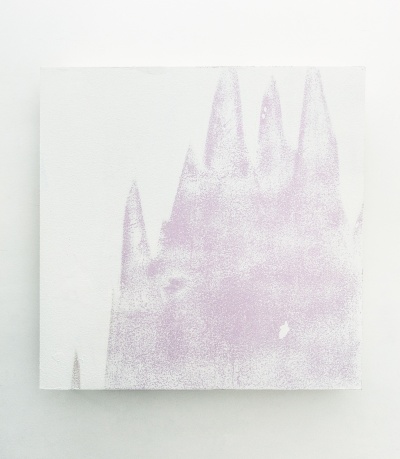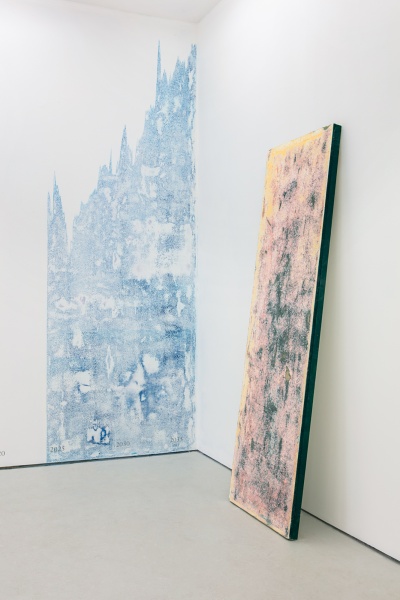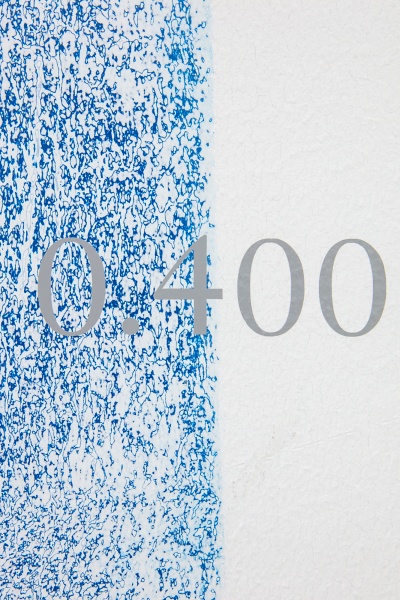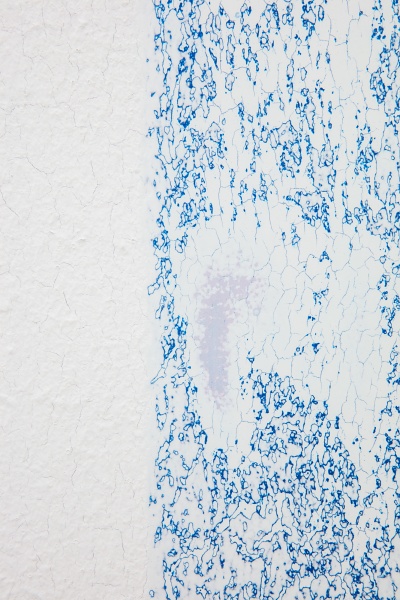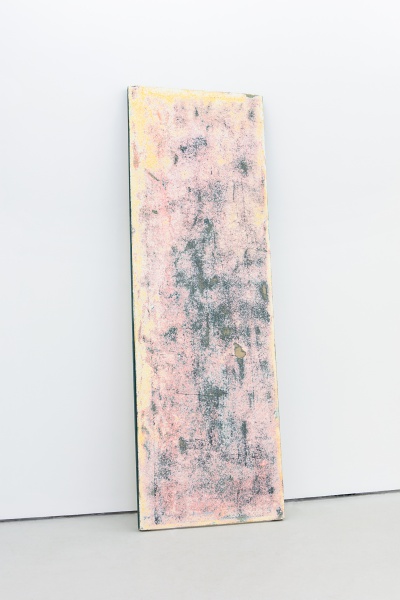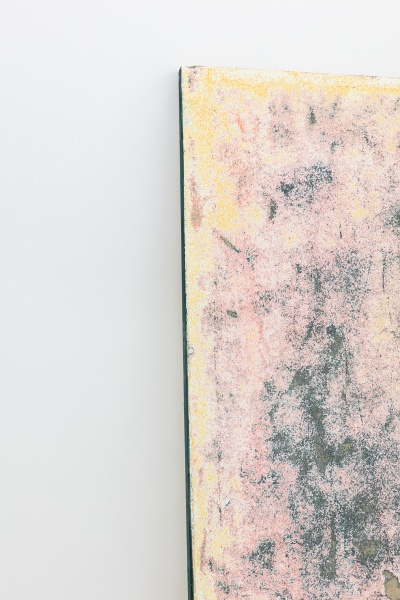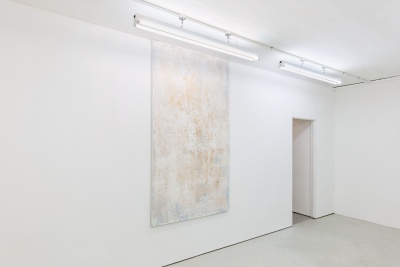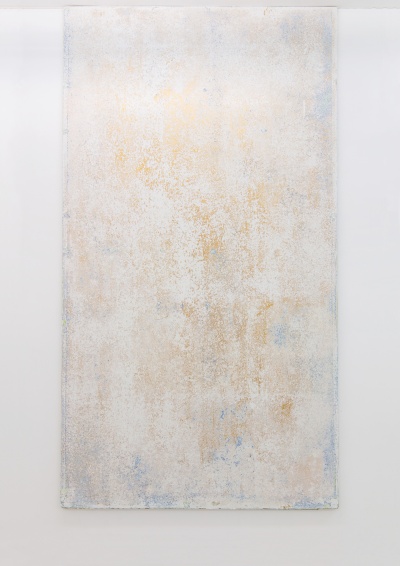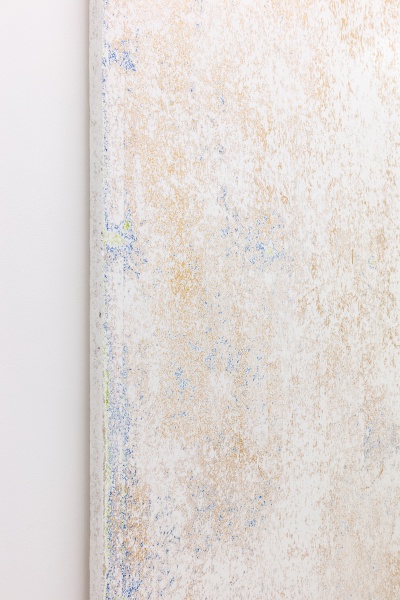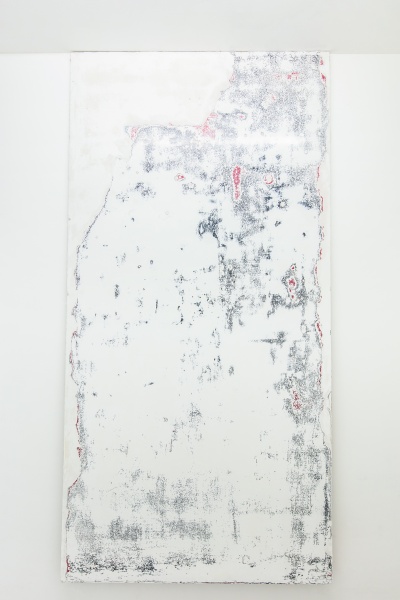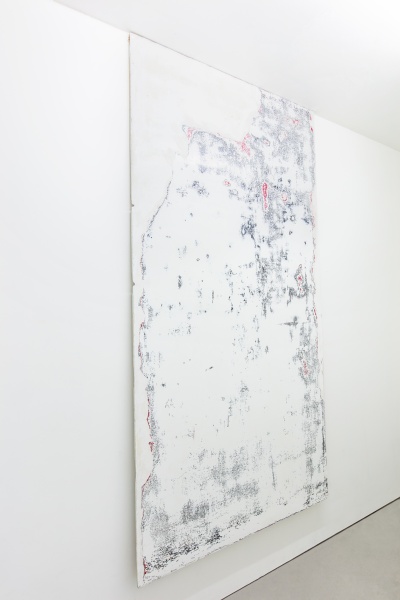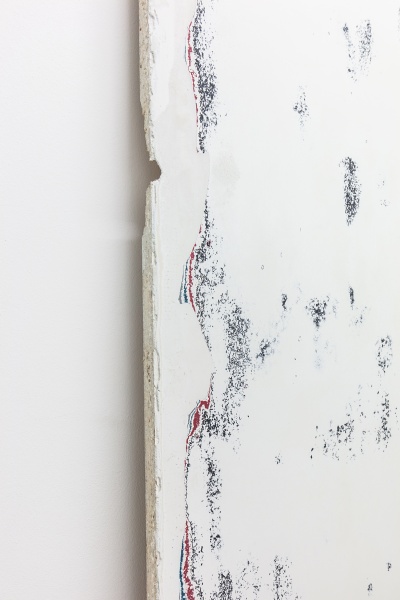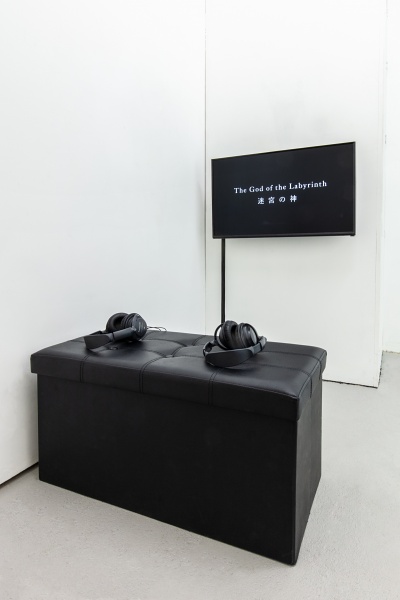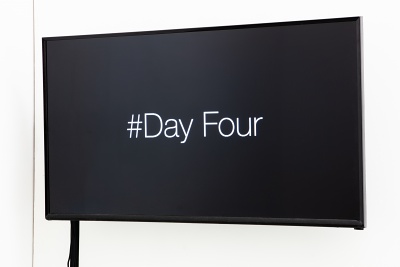Entering gallery, one is greeted by two large walls, either side of the main space, bearing painstakingly drawn geometrical shapes. These are two financial charts amplified to fit the space. The lines and marks are created by meticulously sanding and polishing, revealing the past layers of the walls’ paint. In contrast to the delicate visual effects of the immaculately polished surface of this large scale wall installations, typical of his practice, Kawakubo uses financial indicators and experts forecasts that do not necessarily depict an optimistic view of the world today or tomorrow. The one-time financial trader draws upon the foreign exchange rates of the Pound Sterling to the German Mark, as well as the UK net corporate profit rate for the current exhibition. He reminds us that the fluctuations of these indicators reflect the collective will which has no physical reality. However, tracking the movement of these indicators, these charts capture and make tangible the invisible forces behind them. Blown up to such a large scale, the charts dominate the space emphasising that they are beyond human control.
In a new work created for this exhibition, Kawakubo presents a series of participatory performance, ‘Study for a Zekkei VI (tea ceremony in the darkness)’. A visitor is invited to a pitch black room where a Japanese tea master awaits. She prepares and serves the Japanese maccha tea to the blinded guest, using a traditional tea ceremony paraphernalia including a bowl, other articles and a scroll painting on the wall. Kawakubo quotes Oda Nobunaga, one of the grandest sixteenth century Japanese warlords and an avid tea utensil collector, who is believed to have said that a fine tea bowl is worth a country. But what is the ‘worth’ of the art works? Incapable of visually appreciating the ceremony, bowl or the scroll, the visitor may consider worth and value beyond the visual.
The video, ‘The God of the Labyrinth’ is a sophisticated amalgam of culture, language and literature. In this work Kawakubo dissects the totality of Jorge Luis Borges short story ‘An Examination of the Work by Herbert Quain’ into the individual letters of the alphabet, and reconstitutes them into a new story using all of, and only these letters, which can be likened to a grand scale, advanced anagram. The importance of each word making up the story is emphasised as it appears on screen one by one in English, while Spanish and Japanese narrations separately and simultaneously are fed into right and left ears, the resulting experience prompting reflection about relevance between languages as well as signifying and signified.
The universe Kawakubo creates is complex and transcends culture with its multiple layers of meaning behind poetic and elegant façade. What might initially be seen as several disparate works, upon engagement and reflection, gradually starts to form a coherent whole. Much like his wall installation, this body of work invites the visitor to strip down the layers leaving some aspects of each apparent, to finally arrive at the coherent and complete picture.
Yoi Kawakubo
Born in Toledo, Spain in 1979, lives and works between London and Tokyo. BA in Human Sciences, University of Tsukuba, Japan. Following his time working as a financial market trader, Kawakubo embarked on his artistic career in 2008.
Selected solo exhibitions include:
‘Two million years of solitude, cherry blossoms and fifty thousand light years more’ Koganecho Site-A, Yokohama, Japan in 2017, ‘Stella Maris was a name I found in a dream’, Daiwa Foundation Japan House, London, and ‘Fall’, Shiseido Gallery, Tokyo, in 2016.
Selected group exhibitions include:
‘Islands, Constellations and Galapagos’, Yokohama triennial 2017, Yokohama, Japan, ‘Seize the uncertain day’, The University Art Museum - Tokyo University of the Arts, Tokyo, and ‘Linguamania’, Ashmolean Museum, Oxford, in 2017.
Kawakubo is a recipient of numerous awards and grants, including Florence Trust Artist in residency, Fellow of Overseas Study Programme for Artists, Agency for Cultural Affairs, Government of Japan, and shortlisted for Shiseido Art Egg Prize in 2016.
To Participate in the Performance
The performance 'Study for a Zekkei VI (tea ceremony in the darkness) will take place Saturdays 9, 16, 23 of June and 7, 14, 21 of July. There will be four sessions, at 4pm, 4:30pm, 5pm and 5:30pm each day. Each session will last for approximately 15 minutes. There will be a small fee to participate. Contact gallery for inquiry. Upon confirmation, the artist will post a hand-written formal invitation for the event.

